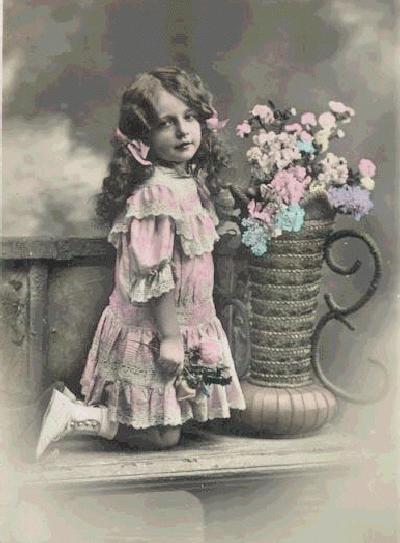
Figure 1.--This French post card shows a fancy girls' dress that was probablu worn in the 1910s. By thistinme the fashion of younger boys wearing dresses was becoming less common. |

|
Dresses are of course primarily associated with girls and until World War II (1939-45), girls mostly wore dresses. It was unusual to see girls in shorts and pants until after the War. In some countries, well after the War. HBC at this time does not have detailed information on girls' dress styles. This would be very helful in helping to ssess undated image and to comapre with styles of dresses boys wore over time. Boys and girls at times have worn identically styled dresses, but toward the alter 19th century some destinctive boys styles appeared. Not all mothers chose these generally plain boy styles, but most did.
Dresses are of course primarily associated with girls. The revolution in boys' clothing initiated by the skeleton suit beginning about 1770 did not come until 3 decaded later for girls at the turn of the 19th century. Girls began wearing Empire style frocks made in white muslin with high-waists anfd short, balooning sleeves. These frocks were in keeping with the temper of the times, and gave the impression of revolutionary freedom and a girlish innocence. They were also much less restrictive than the cumbersome dresses formerly worn. Girls continued wearing only dresses throught the 19th century, albeit with considerable stylistic changes. Gradually girls dresses became much more elaborate and restrictive. Unlike boys clothing whjich was styled differently than their father's outfits, girls often wore dresses styled like their mothers, albeit often with shorter hems. Major changes in styles came with the 20th century, especially after World War I (1914-18). While the styles changed, until World War II (1939-45), girls still mostly wore dresses. It was unusual to see girls in shorts and pants until after the War. In some countries, well after the War. After the War, Yves Saint Laurent introduced the shift dress with very short skirts. Courr�ges created party dresses similar to those worn in 1920s nurseries. Beginning in the 1960s girls began turning away from dresses. Many girls by the 1990s rarely wore dresses, prefering shorts or jeans. HBC at this time does not have detailed information on girls' dress styles. This would be very helful in helping to ssess undated image and to comapre with styles of dresses boys wore over time. HBC would be very interested in working with a reader interested in developing information on historical girls' dress styles.
Boys and girls at times have worn identically styled dresses. Boys generally wore dresses until about age 5, but this varied widely from family to family and over time. There were also destinct country and socail class differences. Toward the later-19th century some destinctive boys styles appeared. Not all mothers chose these generally plain boy styles, but most did.
Dress construction varies, but is fubdamentally amde up of several key elements. They include the collar/neckline, bodice, sleeves, waistline, and skirt. One of the important stylistic elements was the neckline. We note children wearing dresses with low necklines during the early- and mid-19th century. We are not sure if low-neckline dresses were commonly worn or a dessy style. The conventions for children with low-necklines seem to be more age than gender. A good example is unidentified American children, we think in the late-1850s. As the century progressed, necklines rose and we no longer see low necklines for children. We see collars that totally enclose the neck. Not all dresses had collars, but the ones that did not still had fabric that enclosed the neck area. The top of the dress was the bodice which covered the torso and was done in many differet ways. It commonly buttoned in the back. We are not sure just how girls mastered thatbfeat of hand. Sleeves were another important element. We notice many different styles and lenghs. Drsses varied in the waistline treatment. Some were done without waustlines with the bodice falling straightbdown into the shirt. Other dresses had tightly defined waistlines. A common comnvention that became bands in th back which tied into a bow. That seems a little tricky. Youngerv girls had the bow tied by mon, Older girls mastered it in their own. The bottom of the ress was the skirt whicvh was done in many different ways. One such approach was pleating like a kilt, Skirt lengths varied widely as to bnothnage and thevfashion of the day.
Navigate the Boys' Historical Clothing Web Site:
[Return to the Main girl page]
[Introduction]
[Activities]
[Biographies]
[Chronologies]
[Clothing styles]
[Countries]
[Chronology]
[Theatricals]
[Bibliographies]
[Contributions]
[FAQs]
[Glossaries]
[Images]
[Links]
[Registration]
[Tools]
[Boys' Clothing Home]
